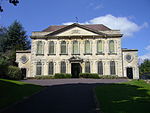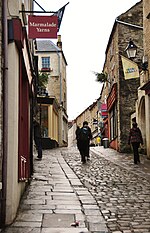Frome Rural District
Districts of England abolished by the Local Government Act 1972Districts of England created by the Local Government Act 1894History of SomersetLocal government in SomersetRural districts of England ... and 1 more
Use British English from August 2012
Frome was a rural district in Somerset, England, from 1894 to 1974. The district was created in 1894 under the Local Government Act 1894. It was abolished in 1974 under the Local Government Act 1972 when it became part of the district of Mendip. The parishes which were part of the district included Beckington, Berkley, Buckland Dinham, Coleford, Frome, Great Elm, Hemington, Kilmersdon, Leigh on Mendip, Lullington, Mells, Norton St Philip, Nunney, Rode, Selwood, Tellisford, Trudoxhill, Upton Noble, Wanstrow, Whatley and Witham Friary.
Excerpt from the Wikipedia article Frome Rural District (License: CC BY-SA 3.0, Authors).Frome Rural District
Gorehedge,
Geographical coordinates (GPS) Address Nearby Places Show on map
Geographical coordinates (GPS)
| Latitude | Longitude |
|---|---|
| N 51.228 ° | E -2.322 ° |
Address
Gorehedge
BA11 1JB , The Butts
England, United Kingdom
Open on Google Maps










